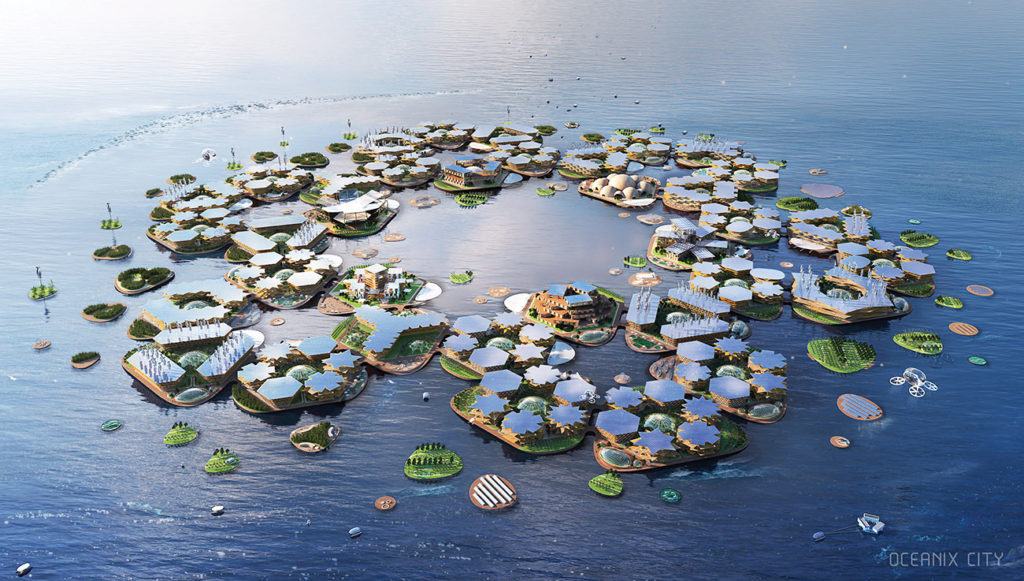1st Quarter 2022
Prototype for a sustainable floating city to be built in Busan
March 15, 2022

Aerial view of OCEANIX City, which is designed as a scalable and self-sustaining waterborne habitat. Images courtesy of OCEANIX/BIG-Bjarke Ingels Group
Coastal cities are most vulnerable to climate change, with rising sea levels threatening almost half of the global population. Instead of reclaiming land or building a sea wall, Busan Metropolitan City of the Republic of Korea will take a different approach by building the world’s largest prototype floating city through a partnership with UN-Habitat and OCEANIX. Busan’s geography of deep coastal waters and gentle tides has helped the city grow into the world’s fifth largest container handling port. It is home to some 3.4 million citizens and has one of the biggest industrial complexes in Korea.
The development called OCEANIX City has been designed by Bjarke Ingels Group (BIG), envisioned to house 10,000 residents on an area of 75 hectares. This man-made ecosystem has been anchored in the Sustainable Development Goals (SDGs) of the United Nations to channel flows of energy, water, food and waste, creating a blueprint for a modular maritime metropolis. The city is designed to grow, transform and adapt organically over time, evolving from neighbourhoods to cities, with the possibility of scaling indefinitely.
The design consists of modular neighbourhoods spanning 2 hectares each, equipped with mixed-use spaces for living, working and gathering during day and night. All built structures are kept below seven storeys to create a low centre of gravity and to resist wind. Each building is designed to fan out to self-shade internal and external spaces, providing comfort and lowering cooling costs while maximising roof area for solar capture. Communal farming will be prioritised as a way of life—beneath the platforms, ‘bio-rock’ floating reefs, seaweed, oysters, mussel, scallop and clam farming are positioned to help clean the water and accelerate ecosystem regeneration. Six neighbourhoods will be clustered around a protected central harbour to create larger villages, with floating destinations such as public squares, education and sports buildings, markets and spiritual centres.
Locally sourced materials will be prioritised for the construction, including fast-growing bamboo with six times the tensile strength of steel and a negative carbon footprint. The modules can be prefabricated on shore and towed to the final site, reducing construction costs. This, paired with the low cost of leasing space on the ocean, creates an affordable model of living that could be deployed to other coastal megacities.
The refined prototype is expected to be presented at a UN roundtable in April 2022, with the first prototype planned to launch in 2025.
Editor’s note: As an emerging type of architecture, we will take a deeper look at this project in the 2Q 2022 issue of FuturArc.
Read more stories from FuturArc 1Q 2022: Housing Asia!

To read the complete article, get your hardcopy at our online shop/newsstands/major bookstores; subscribe to FuturArc or download the FuturArc App to read the issues!
Previously Published Happening
Contact us at https://www.futurarc.com/contact-us for older articles.
